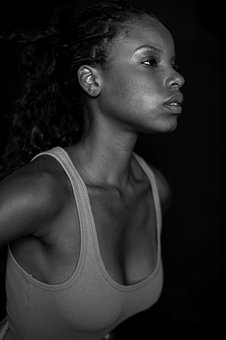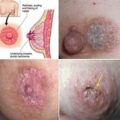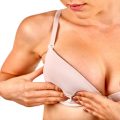Breast are made of glandular tissues located on the upper ventral region of the torso of a woman’s body. It is one of the most sensitive part of the female’s body which serves as milk producing site.
Women of all ages are encouraged to perform breast examination from time to time and report any abnormality to their doctors for prompt attention.
Breast lumps and other abnormality may be benign or cancerous as such no unusual lump should be taken for granted. This is because breast cancer is the 5th highest killer of women globally.
Belgium, Denmark and France have the highest rate of breast cancer in the world while the rate of breast cancer in developing countries is steadily on the rise.
Self-examination of the breast involves taking time to understand your breast, for best breast health it is recommended that women examine their breast at least once a month as early detection of breast cancer significantly increases the chances of survival.
STEPS IN BREAST EXAMINATION
Performing regular self-breast examinations is an empowering and proactive approach for individuals to become more familiar with their breast tissue and take charge of their breast health. While self-examination is not a definitive diagnostic method, it serves as a valuable tool for early detection of potential breast abnormalities. Early detection is crucial because it can significantly improve the chances of successful treatment and recovery in cases of breast cancer.
STEP 1: The first step of the self-breast examination involves standing in front of a mirror with your hands on your hips. This position allows you to visually inspect your breasts for any noticeable changes or abnormalities. As you gaze at your breasts, be attentive to any changes in skin color, texture, or appearance. Pay close attention to any unusual lumps, bumps, or changes in size or shape. Other important signs to look out for include nipple inversion (when the nipple turns inward), any rash or skin irritation, and any unexplained swelling or asymmetry between the breasts.
STEP 2: For the second step, repeat the visual inspection, but this time raise your hands above your head. Raising your hands changes the breast’s position and might reveal different angles or changes that were not apparent in the first position. Comparing the two positions can help in identifying subtle changes that may be relevant for assessment.
STEP 3: While still standing in front of the mirror, check for any signs of fluid coming out of either one or both nipples. In some cases, nipple discharge can be normal, but it’s essential to be aware of any sudden or persistent changes in nipple discharge, especially if it is bloody or spontaneous.
STEP 4: To continue with the examination, lie down comfortably on a flat surface. Using the pads of your fingers, gently and systematically examine your breast tissue. Start with one breast at a time, using a circular motion and moving from the top to the bottom, and then from the side to side. The goal is to cover the entire surface area of the breast, including the area close to the armpit and up to the collarbone. Repeat the same procedure for the other breast, using your right hand to examine the left breast and vice versa. During this step, pay attention to any unusual lumps, thickening, or changes in tissue texture that may be felt beneath the skin.
STEP 5: Finally, while sitting down or after a shower or bath when the skin is slippery, examine your breasts again. This step can be particularly useful, as the wet skin makes it easier to glide your fingers smoothly over the breast tissue, making it easier to detect any subtle changes or abnormalities. SEE Breast Cancer NGOs In Nigeria and their Contacts
It is important to emphasize that not all lumps or changes in the breast indicate cancer. Many breast conditions are benign, such as cysts or fibroadenomas, which are non-cancerous growths. However, it is crucial to report any new or unusual findings to a healthcare professional for a proper evaluation and diagnosis. A healthcare professional can conduct a clinical breast examination, where they use their expertise to further assess any abnormalities and decide if additional tests, such as mammograms or ultrasounds, are necessary.
Regular clinical breast examinations and mammograms are recommended as part of a comprehensive breast cancer screening routine for women, especially those above a certain age or with a higher risk of developing breast cancer due to family history or other factors.
In conclusion, self-breast examination is a proactive way for individuals to be involved in their breast health. Being aware of what is normal for your breasts and promptly reporting any changes or concerns to a healthcare professional can contribute significantly to early detection and better treatment outcomes if breast cancer or any other breast-related condition is present. Remember that knowledge about your body and regular check-ups are essential for maintaining good breast health and overall well-being. READ Does Pressing Breast Cause Sagging?
Read : Money In the Bra How Money Spread Disease
Copyright ©
Permission is hereby granted for the use of whole or parts of this article provided appropriate credit is given to www.publichealth.com.ng







4 Comments